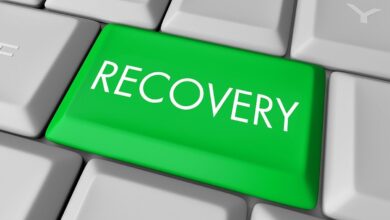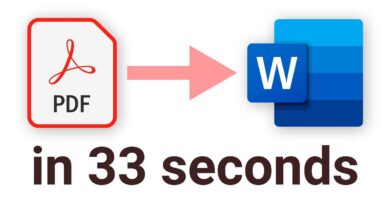How To Unlock Facebook Account (New Update 2024)
How To Unlock Facebook Account (New Update 2024)

With the ever-evolving landscape of social media security, Facebook users may find themselves facing the unexpected challenge of a locked account. The 2024 update to Facebook’s policies and procedures has introduced new complexities to the account recovery process. This article is designed to guide you through the necessary steps to unlock your Facebook account, providing a comprehensive understanding of the reasons behind account locks, immediate actions to take, and how to navigate Facebook’s support system to regain access to your account.
Key Takeaways
- Recognize the common triggers and the latest policy changes that could lead to a Facebook account lock in 2024.
- Learn the immediate steps to verify and secure your account, and how to avoid falling victim to scams in the process.
- Understand how to effectively use the Facebook Help Center, including how to submit a support ticket and what to expect from the support process.
- Familiarize yourself with the verification process, including the types of identification documentation required and the security checks involved.
- Discover strategies for account recovery through friends, setting up stronger security measures, and how to prevent future account locks.
Understanding the Reasons Behind Facebook Account Lock

Common Triggers for Account Locks
Ever found yourself suddenly logged out of Facebook, unable to get back in? You’re not alone. Many users experience account locks, and it’s essential to know why. The most common triggers include suspicious activity, such as logging in from an unfamiliar location or device, which Facebook might interpret as unauthorized access.
Other reasons for an account lock can be policy violations. Facebook updates its policies regularly, and what was acceptable yesterday might not be today. Here’s a quick list of triggers that could lock you out:
- Repeatedly entering the wrong password
- Violating Facebook’s community standards
- Unusual activity that suggests your account may be compromised
It’s important to stay informed about the latest policy changes to avoid unintentional lockouts.
If you’re facing a lockout, don’t panic. Start by understanding the specific reason behind it, which is the first step towards regaining access to your account.
Policy Changes in 2024
With the How To Unlock Facebook Account (New Update 2024), it’s crucial to stay informed about the latest policy changes. In 2024, Facebook has updated its guidelines, which may affect how we Recover a locked Facebook account Your account has been locked in 2024. These changes are designed to enhance security and ensure a safer online environment for all users.
- Review the updated community standards.
- Understand the new account verification procedures.
- Familiarize yourself with the revised account recovery options.
It’s important to adapt to these changes quickly to minimize the risk of future account locks. By staying up-to-date, you can navigate the recovery process more efficiently.
Remember, the page provides guides on recovering disabled Facebook accounts, bypassing Facebook authentication, and gaining followers on social media platforms in 2024. These resources are invaluable for getting back into your account without unnecessary delays.
Identifying Your Specific Lock Reason
Once you’ve confirmed that your Facebook account is locked, it’s crucial to figure out why it happened. Start by checking any emails or notifications from Facebook; they usually explain the reason for the lock and provide steps to resolve the issue. If the reason isn’t clear, consider recent activities on your account that might have triggered the lock. Here’s a quick checklist to help you identify common causes:
- Did you share content that could be considered against Facebook’s Community Standards?
- Have you sent friend requests or messages at a high rate that might appear as spam?
- Were there any attempts to access your account from an unfamiliar location or device?
- Have you used any third-party apps or services that aren’t authorized by Facebook?
Remember, identifying the specific reason is essential for a smooth recovery process. If you’re still puzzled, you can always reach out to Facebook’s support for clarification. And while the cause could be various, one thing is certain: staying informed about policy updates is key to avoiding future locks.
Immediate Steps to Take After Account Lock

Verifying Account Lock Status
When I first realized my Facebook account might be locked, I didn’t panic. Instead, I went straight to the source to verify the status. The first thing I did was check my email and SMS notifications; Facebook usually sends a message if they’ve locked your account for any reason. If you don’t see any notifications, try logging into your account. A locked account will typically display a message explaining the lock when you attempt to sign in.
Verification is key here, as sometimes what seems like a lock could just be a sign-in issue. If you’re certain your account is locked, take note of any instructions provided by Facebook. They often include the next steps you should follow.
Remember, verifying the lock status is the crucial first step before taking any further action.
Here’s a quick checklist to help you verify your account status:
- Check your email inbox and SMS for messages from Facebook.
- Attempt to log in to your Facebook account.
- Look for any messages or prompts from Facebook regarding the lock.
Securing Your Account Information
After confirming that my Facebook account is locked, my next move is to secure my account information. I need to ensure that my personal details haven’t been tampered with. This includes checking my email addresses, phone numbers, and security questions associated with my account. It’s crucial to update any outdated information and remove any unrecognized details immediately.
Security is paramount, so I also make a point to review the devices where my Facebook account is logged in. If I spot any unfamiliar devices or locations, I’ll remove them right away. Here’s a quick checklist to help me stay organized:
- Review and update contact information
- Check and secure email accounts linked to Facebook
- Remove unauthorized devices and sessions
- Change passwords for related accounts, if necessary
Remember, taking these steps promptly can prevent further issues and help expedite the account recovery process.
Avoiding Scams and Phishing Attempts
In the digital age, scams and phishing attempts are unfortunately common, and they can often lead to your Facebook account getting locked. Always be cautious when you receive messages or emails that seem suspicious or ask for your personal information. Here’s what I do to stay safe:
- I never click on links from unknown sources. If an email or message looks fishy, it probably is.
- I always double-check the URL of the Facebook login page before entering my details. Scammers often create fake login pages to steal your info.
- I use Facebook’s official channels for communication. If Facebook needs to contact me, they’ll do it through the app or official website, not through a random email.
Remember, Facebook will never ask for your password in an email or message. Keep your guard up and report anything that looks out of place.
By following these simple steps, I’ve managed to keep my account secure. And if you’re ever unsure about something, it’s better to err on the side of caution and reach out to Facebook support directly.
Navigating the Facebook Help Center

Accessing the Right Resources
When my Facebook account got locked, I knew I had to find the right help quickly. The first thing I did was head over to the Facebook Help Center. It’s a hub where you can find all sorts of information and solutions tailored to different issues. Navigating through the Help Center is crucial; it’s easy to get lost in a sea of links and FAQs.
To make sure I was on the right track, I created a simple list of steps to follow:
- Log in to your Facebook account.
- Click on the ‘Help & Support’ section in the main menu.
- Select ‘Help Center’ to access a wide range of topics.
- Use the search bar to find articles related to account locks.
Remember, the Help Center is your best friend in this situation. It’s designed to guide you through the process of unlocking your account, providing detailed instructions and necessary forms.
It’s important to use the resources provided by Facebook wisely. Stick to the official channels to avoid scams and ensure you’re getting accurate information.
Submitting a Support Ticket
Once I’ve confirmed that my account is locked, the next step is to submit a support ticket to Facebook. I need to head over to the Help Center and find the form for locked accounts. It’s crucial to fill out the form accurately with all the required information to avoid any delays. Here’s a simple list of what I usually include:
- Full name as it appears on my Facebook account
- Email address or phone number linked to the account
- A clear explanation of the issue
- Any additional details that might help Facebook understand my situation
Remember, patience is key. After submitting the ticket, it might take a while for Facebook to respond due to the volume of requests they handle.
Once the ticket is submitted, I keep an eye on my email for any communication from Facebook. It’s important to respond promptly to any requests for additional information to expedite the process.
Understanding Facebook’s Support Process
Once you’ve submitted a support ticket, it’s crucial to understand how Facebook’s support process works. Patience is key as response times can vary, especially during peak periods. Typically, you’ll receive an automated confirmation that your ticket has been received. From there, a real person will review your case and reach out with further instructions or requests for information.
Facebook’s support team is trained to handle a wide range of issues, but they follow strict guidelines to ensure user safety and compliance with platform policies. Here’s a quick rundown of what to expect:
- Initial Response: You’ll get an automated message confirming your ticket submission.
- Review Period: A support team member reviews your case within a specified timeframe.
- Follow-up: You may be asked to provide additional information or to complete certain actions.
- Resolution: The team will inform you of the outcome, which could be account recovery or an explanation of the lock.
Remember, the support process is designed to protect your account and personal information. Stick to the official channels and avoid third-party services claiming to unlock accounts faster.
Verification Process to Unlock Your Facebook Account

Providing Identification Documentation
When I found out my Facebook account was locked, I knew I had to act fast. The first thing I did was gather my identification documents. Facebook requires a clear, legible copy of a government-issued ID to verify that I’m the rightful owner of the account. This could be a passport, driver’s license, or national ID card.
Identification is crucial in this process, and Facebook has a specific list of acceptable documents. Here’s what I prepared:
- A photo ID showing my name and date of birth
- A document with a photo and a name that matches the one on my profile
- Proof of legal name change, if applicable
Remember, the name on your documentation must match the name on your Facebook profile.
After uploading the documents through the secure form provided by Facebook, I made sure to keep copies just in case I needed to refer to them later. It’s a waiting game from here, but providing the right documents can speed up the process.
Completing Security Checks
Once I’ve confirmed my identity, the next step is to complete the security checks Facebook has in place. This is a crucial part of the process to ensure that it’s really me trying to regain access to my account. I’ll be prompted to go through a series of tasks that might include answering security questions, recognizing friends’ photos, or confirming information from my past posts.
Security checks vary depending on the situation, but here’s a general idea of what I might encounter:
- Answering personal security questions that I set up previously.
- Identifying friends in photos to prove my connections with them.
- Confirming details from previous posts or messages.
It’s important to take these checks seriously and provide accurate information. Any mistake could delay the recovery of my account.
After completing these steps, I’ll have to wait for Facebook to review and verify the information. Patience is key here, as the review process can take some time depending on the complexity of the security issue and the volume of requests Facebook is handling.
Awaiting Verification Results
Once you’ve submitted all the necessary documentation and completed the required security checks, the waiting game begins. Patience is key during this phase. The verification process can vary in length, but typically, you’ll receive a response from Facebook within a few weeks. Remember, the exact time frame can depend on the complexity of your situation and the current volume of requests Facebook is handling.
It’s important to regularly check your email and Facebook notifications for any updates or further instructions from the support team.
While you wait, it’s a good idea to review your account’s security settings and ensure everything is up-to-date. This proactive approach will not only prepare you for a smooth return to Facebook but also help safeguard your account in the future. Here’s a quick checklist to keep in mind:
- Review and update your contact information
- Check your privacy settings
- Confirm that two-factor authentication is enabled
Stay calm and avoid the temptation to submit multiple tickets for the same issue, as this can actually slow down the process. Once you receive the verification results, you’ll be informed if your account has been unlocked or if further action is required.
Recovering Your Account Through Friends

Using Trusted Contacts Feature
If you’ve ever been locked out of your Facebook account, you know the panic that sets in. But there’s a feature that can be a real lifesaver: Trusted Contacts. It’s a way to regain access to your account with the help of friends you trust. Here’s how it works:
- Choose 3 to 5 friends to be your Trusted Contacts.
- If you get locked out, these friends will receive a code.
- Collect the codes from your friends.
- Enter the codes to unlock your account.
Remember, your Trusted Contacts should be people you can reach without Facebook. They need to be individuals you trust deeply, as they’ll play a crucial role in your account recovery process.
It’s essential to keep your Trusted Contacts list up-to-date. If your relationship with any of the contacts changes, or if they’re no longer active on Facebook, update your list promptly.
Guiding Friends Through the Help Process
Once you’ve reached out to your trusted contacts, it’s crucial to guide them through the help process. Make sure they understand the importance of their role in recovering your account. Here’s a simple breakdown of what they need to do:
- Visit the special URL that Facebook provides for account recovery.
- Enter the recovery codes sent to their email or phone.
- Follow any additional instructions provided by Facebook.
Remember, your friends might not be as tech-savvy as you, so be patient and offer clear, step-by-step guidance. If they encounter any issues, remind them that they can always reach out to Facebook’s support for help.
It’s essential to act quickly but calmly. The faster your friends can provide the necessary information, the sooner you’ll regain access to your account.
Lastly, keep in mind that the process might have changed since the last time you checked. Always double-check the current procedure to avoid any confusion or delays.
What to Do if You Can’t Access Trusted Contacts
If you’re stuck because you can’t access your trusted contacts, don’t panic. There’s still a way to get back into your account. First, you’ll want to try other recovery options that Facebook offers. Check if you have any other email addresses or phone numbers associated with your account that you can use to recover your login information.
- Visit the Facebook Help Center and look for alternative recovery options.
- Attempt to answer any security questions you may have set up.
- Look for the option to provide additional proof of identity, which might include answering questions about your account or providing your photo ID.
Remember, it’s crucial to keep trying different methods listed in the Help Center. Persistence is key when you’re trying to regain access to your account.
If none of these steps work, you’ll need to contact Facebook support directly. They can guide you through the process and help you recover your account. Make sure to provide any other relevant information or proofs of identity that can help verify your ownership of the account.
Creating a Stronger and More Secure Account

Setting Up Two-Factor Authentication
When I found out my Facebook account was locked, I realized just how crucial security measures like two-factor authentication (2FA) are. Setting up 2FA adds an extra layer of security to your account, making it harder for unauthorized users to gain access. Here’s a simple breakdown of how to enable it:
- Go to your Security and Login Settings.
- Scroll down to the ‘Use two-factor authentication’ section.
- Click ‘Edit’ and choose the authentication method you prefer (e.g., text message or authentication app).
- Follow the on-screen instructions to complete the setup.
Remember, once you’ve set up 2FA, you’ll need to provide two forms of identification whenever you log in. This might seem like a hassle, but it’s a small price to pay for keeping your account secure.
It’s important to keep your recovery information up to date so you can always access your account if you lose your phone or change your number.
By taking this step, I’ve added a significant barrier against potential account locks in the future. And if you’re worried about getting locked out of your account, this is one of the best preventative measures you can take.
Choosing a Robust Password
In the digital age, a robust password is your first line of defense against unauthorized access to your Facebook account. Always opt for a more secure version of any password you create. A strong password should be a complex mix of letters, numbers, and special characters. Here’s a simple guide to help you craft a password that’s tough to crack:
- Start with a password generator to ensure randomness.
- Incorporate a passphrase that’s easy for you to remember but hard for others to guess.
- Mix in capital letters, symbols, and numbers to add complexity.
- Avoid using easily guessable information like birthdays or common words.
Remember, the strength of your password directly impacts the security of your account. Regularly updating your password and keeping it unique from other passwords you use can significantly reduce the risk of your account being compromised.
By following these steps, you’ll be well on your way to creating a password that not only meets Facebook’s security requirements but also gives you peace of mind. And don’t forget, with the new update in 2024, staying ahead of security measures is more important than ever.
Regularly Reviewing Security Settings
It’s crucial to make a habit of regularly reviewing your security settings on Facebook. This isn’t just a one-time deal; it’s about staying on top of changes and ensuring your privacy remains intact. Start by checking your settings every few months or whenever Facebook announces updates. Here’s a simple checklist to follow:
- Review your privacy settings for posts and your profile.
- Check who can send you friend requests and messages.
- Confirm your trusted contacts are up-to-date.
- Look over the devices where you’re logged in and remove any you don’t recognize.
Remember, staying vigilant with your security settings is your best defense against unauthorized access to your account.
By keeping an eye on these settings, you can spot any unusual changes that might indicate someone else has gained access to your account. If you want to check or change this setting, go to the Facebook Settings page for Profile and Tagging, and you’ll find the option in the “Viewing and sharing” section.
Dealing with Compromised Accounts

Identifying Signs of a Hacked Account
When I start noticing unfamiliar posts, messages, or friend requests sent from my account, it’s a red flag that something’s off. I might be dealing with a hacked account. It’s crucial to act swiftly to secure my account and prevent further damage.
Activity that I don’t recognize, such as changes to my email, password, or personal information, is a telltale sign of unauthorized access. Here’s a quick checklist to help me identify if my account has been compromised:
- Unexplained messages or posts sent from my account
- Friend requests sent to people I don’t know
- Changes to my account information I didn’t make
- Notifications about login attempts from unknown devices
If I’m locked out of my account and I see signs of tampering, it’s important to consider that my account may have been hacked and immediate action is required.
By staying alert and knowing what to look for, I can take the necessary steps to regain control and protect my personal information.
Immediate Actions to Regain Control
Once I’ve realized my Facebook account might be compromised, I don’t waste a second. The first thing I do is change my password. This is crucial because it can prevent the hacker from further accessing my account. I make sure to create a strong password that’s a mix of letters, numbers, and symbols.
Next, I check for any suspicious activity, like posts I didn’t make or messages I didn’t send. If I spot anything out of the ordinary, I report it to Facebook immediately. Here’s a simple list of actions I follow:
- Change my password immediately
- Review recent activity on my account
- Report any unrecognized actions to Facebook
- Check my account’s email and phone settings
It’s also important to review the apps and websites connected to my Facebook account. I remove any that I don’t recognize or no longer use. Lastly, I reach out to my friends and let them know my account was compromised, so they can be on the lookout for any suspicious messages they might receive from me.
Remember, acting quickly is essential to minimize the damage and start the recovery process. Don’t ignore the signs of a compromised account.
Reporting the Compromise to Facebook
Once you’ve identified that your account has been hacked, it’s crucial to report the compromise to Facebook immediately. The quicker you act, the better the chances of recovering your account. Navigate to the ‘Security and Login’ section under your settings and follow the instructions for reporting a compromised account.
Facebook has streamlined the process to make it as straightforward as possible. Here’s a simple list of steps to follow:
- Go to the ‘Help & Support’ section in your Facebook settings.
- Select ‘Report a Problem’.
- Choose the ‘Something Went Wrong’ option.
- Describe the issue, stating that your account has been compromised.
- Submit the report and wait for Facebook’s response.
Remember, while you’re waiting for a response, refrain from attempting to sign in to your account multiple times as this may trigger additional security locks.
By reporting the issue, you’re not only working towards regaining access to your account but also helping Facebook improve its security measures for all users.
Preventing Future Account Locks

Understanding Facebook’s Updated Community Standards
With the new update in 2024, it’s crucial to get a grip on the updated Community Standards to prevent future account locks. Facebook has revamped its guidelines, and staying informed is your first line of defense. These changes reflect Facebook’s ongoing commitment to safety and respectful interaction among users.
One key update is the stricter enforcement of content related to misinformation. It’s essential to double-check the credibility of what you share to avoid unintentional violations. Here’s a quick rundown of the major updates:
- Enhanced rules against hate speech and harassment
- Increased scrutiny on misinformation and fake news
- Clearer guidelines on intellectual property rights
Remember, these standards are in place to create a safer environment for everyone. By adhering to them, you’re not only protecting your account but also contributing to a more trustworthy platform.
It’s a good idea to review the full list of standards periodically, especially after an update. This proactive approach will help you steer clear of any content that could trigger a lock on your account.
Best Practices for Posting and Sharing
When it comes to posting and sharing on Facebook, it’s crucial to stay informed about the platform’s best practices to avoid any potential account locks. Always review your content for adherence to Facebook’s community standards before sharing. This includes checking for any sensitive material that might be flagged by the updated algorithms.
Engagement is key, but it should be genuine. Avoid using engagement bait tactics such as asking for likes, shares, or comments in a manipulative way. Instead, focus on creating content that naturally encourages interaction.
Here’s a simple list to keep in mind every time you’re about to share something on Facebook:
- Ensure your content is appropriate and follows the latest community guidelines.
- Be mindful of copyright laws, especially when sharing music or videos.
- Respect the privacy of others; obtain consent if you’re sharing content that involves other people.
Remember, the goal is to foster a positive and respectful community on Facebook. Your contributions should add value and reflect the platform’s ethos of connecting people in meaningful ways.
Keeping Your Account Activity Transparent
Maintaining transparency in your account activities is crucial to prevent future locks. Always be clear and honest in your interactions on Facebook. This means avoiding misleading information or behavior that could be interpreted as deceptive. For instance, don’t use fake names or impersonate others, and ensure your posts and shares are genuine.
Transparency also extends to the content you engage with. If you’re managing a page or a group, make sure the rules are clear and enforced consistently. Here’s a simple list to keep your activity transparent:
- Regularly review your profile information for accuracy.
- Be straightforward about your intentions when posting or messaging.
- Avoid sharing content that could be considered false or manipulative.
Remember, keeping your account activity transparent is not just about following rules; it’s about building trust with the Facebook community and the platform itself.
To ensure you’re never locked out of your account again, visit our website for a comprehensive guide on preventing future account locks. Our expert tips and step-by-step instructions will help you secure your account and maintain uninterrupted access. Don’t wait until it’s too late; take proactive steps now by clicking on ‘How To Recover Disabled Facebook Account 2024‘ for peace of mind and secure account management.
Conclusion
Navigating the process of unlocking a Facebook account can be a daunting task, especially with the platform’s constant updates. However, by following the step-by-step guidance provided in this article, you should be able to regain access to your account with relative ease. Remember to keep your account information up-to-date, use strong passwords, and adhere to Facebook’s community standards to avoid future lockouts. If you encounter any issues, don’t hesitate to reach out to Facebook’s support for assistance. Stay vigilant and proactive in securing your online presence.
Frequently Asked Questions
What are common reasons for a Facebook account to be locked?
Accounts can be locked due to suspicious activity, repeated violations of Facebook’s Community Standards, or as a precaution if the platform suspects unauthorized access.
What policy changes in 2024 might affect account locks?
In 2024, Facebook updated its policies to include more stringent measures against misinformation and fake accounts, which may lead to an increase in account locks for non-compliant users.
How can I verify if my Facebook account is locked?
You can verify your account status by attempting to log in. If locked, you will see a message informing you of the lock and providing further instructions.
What should I do immediately after my Facebook account is locked?
Immediately after your account is locked, you should verify the lock status, secure your account information, and ensure that you don’t fall for scams or phishing attempts.
How do I submit a support ticket to Facebook?
To submit a support ticket, navigate to the Facebook Help Center, find the appropriate category for your issue, and follow the prompts to submit a request for assistance.
What identification documentation is needed to unlock my Facebook account?
Facebook may require you to provide government-issued ID, such as a driver’s license or passport, to verify your identity and unlock your account.
Can I recover my Facebook account through friends?
Yes, if you have set up Trusted Contacts, you can ask them to help you regain access to your locked account by providing recovery codes.
How can I prevent my Facebook account from being locked in the future?
To prevent future locks, understand and adhere to Facebook’s Community Standards, engage in best practices for posting and sharing, and keep your account activity transparent.





One Comment